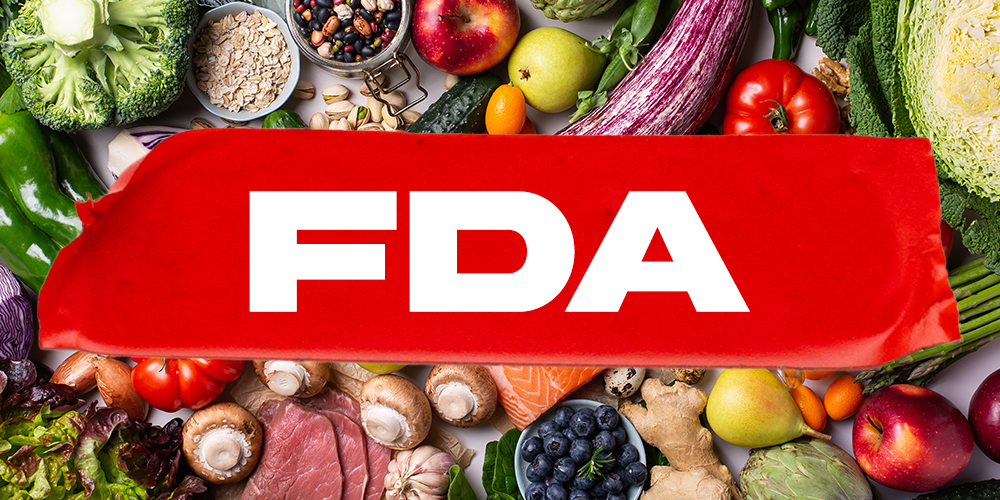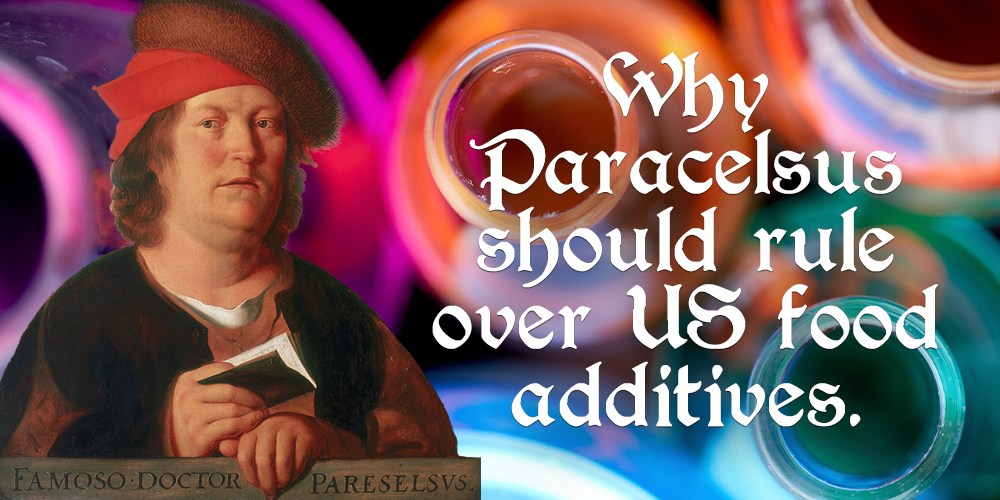When safety goes too far, we risk losing the very ingredients that keep us healthy—balance, not blanket bans, is the real solution. Action Alert!
By Rob Verkerk, Ph.D., Jonathan Emord, J.D., and Michael Ames-Sikora
Listen to the audio version of this article:
THE TOPLINE
- Sweeping changes to the GRAS system could unintentionally ban safe, beneficial nutrients and foods, harming public access to health-supporting ingredients.
- The precautionary principle, while well-meaning, often ignores the complexity of nutrition and dose-dependent effects, leading to overregulation and reduced consumer choice.
- A nuanced reform—like the one proposed in our white paper—can enhance safety and transparency without sacrificing innovation or legality.
On March 10, 2025, Secretary Robert F. Kennedy, Jr. directed the FDA to explore eliminating the self-affirmed GRAS (Generally Recognized As Safe) pathway. In an exclusive interview with Face the Nation just a week ago, Secretary Kennedy called GRAS the “biggest villain” in America’s uniquely synthetic additive-rich food supply, and argues that eliminating exposure to synthetic additives like certain food dyes that have been banned in Europe would be an important step in Making America Healthy Again (MAHA).
Better Safe Than Sorry?
Kennedy’s goal is clearly well intended: to protect Americans from potential harm caused by food additives that haven’t gone through formal FDA approval. The “precautionary principle,” as used in the European Union, has been cited as a guiding reason for this reform: “keep it out until you prove [the ingredient] is safe.”
On the face of it, it all sounds entirely reasonable. After all, who wouldn’t want us all to be safe when it comes to our food? But like many things in public policy, the devil is in the details—and the precautionary principle, while well-meaning, often does more harm than good, especially when applied to foods and nutrients, which are also caught by GRAS.
The precautionary principle, in essence, says: “When there’s a possibility that harm may arise, even if we’re not completely sure it will happen, we should take action to prevent it.” In simpler terms, the principle is about being better safe than sorry. We buy smoke alarms and life insurance; we wear seatbelts—even though the chances of being involved in an accident are relatively small.
But when it comes to public policy relating to foods, ingredients in foods, and dietary supplements, adopting the precautionary principle can deny us health enhancing, and even lifesaving, options, especially when the “risk” comes from foods and supplements that also offer health and even therapeutic benefits that are demonstrated scientifically.
>>> Download the ANH GRAS Reform media kit, including the white paper
That is because many foods and supplements contain ingredients that at certain levels are helpful, even essential, but at other levels can create injury, notably for a small subset of the population that is more sensitive. Foods and supplements may also contain compounds or elements that may be potentially detrimental or antagonistic to certain aspects of health, while simultaneously containing a wide range of other compounds or elements that are clearly beneficial to health. That is the paradox of nutrition. Nutrition is so much more than simply a carrier of energy (calories) to the body. Food is a form of biological information. Even a simple, wholesome meal delivers many thousands of discrete chemical substances to the body, many of which have no direct role in energy metabolism. Some of these, especially if isolated and delivered in high concentrations, and in large amounts, may indeed induce harm. But at normal levels of intake, among the entourage of other chemistries with which they are typically associated in a healthy diet, they ‘talk’ to a myriad of metabolic, neurotransmitter, and endocrine pathways, in a language our body recognizes genetically and epigenetically, courtesy of the experience of our ancestors over millennia. What’s more, we’re increasingly learning that some of these potentially harmful substances can deliver benefits via a mechanism known as hormesis.
That’s all very well, you say—but what has this got to do with the nasty additives and dyes Secretary Kennedy wants to remove from the US food supply? Rather a lot, as it happens. Because if the FDA follows through with Secretary Kennedy’s suggestion, several thousand nutrients, plant compounds, and other substances that have found their way into functional foods, dietary supplements, and medical foods via the self-affirmed GRAS process will be caught in the crossfire. That’s the very collateral damage we aimed to avoid in the approach we propose in our white paper which is now in the offices of both Secretary Kennedy and Commissioner Makary.
The Real Risk: Losing Access to Healthy Choices
The GRAS system has been around since 1958. It was created so that substances already known to be safe in the food supply wouldn’t get caught up in endless government red tape. Over time, it has also allowed food and supplement companies to bring innovative, health-promoting ingredients to market quickly, benefiting both consumers and public health. (For more background, read our previous article and see our white paper that proposes a way forward that prevents the proverbial baby being thrown out with the bathwater).

Of course, no system is perfect. We should absolutely guard against bad actors who sneak unsafe or entirely new, untested, bioengineered ingredients into our food. But the solution isn’t to apply a blanket “precautionary” rule that assumes risk without fully considering the benefits or the consequences of eliminating whole foods, ingredients contained therein, or specific supplements.
Take vitamin D, for example. High levels might pose a risk for a small number of people. But restricting those levels for everyone would rob the wider population of well-established benefits of higher vitamin D intake, like stronger bones and a reduced risk of certain cancers. Oily fish is another case in point: yes, many sources contain trace amounts of heavy metals, but its omega-3 content offers powerful heart and brain health benefits. Should we ban fish, or oily fish because it tends to accumulate greater levels of toxic metals?
This is where the precautionary principle falls apart.
>>> Download the ANH GRAS Reform media kit, including the white paper
One-Sided Thinking Leads to Lopsided Policy
According to legal scholar Cass Sunstein (whose critiques are shared by many others in the academic community) the precautionary principle only seems useful when we focus on one part of the problem and ignore everything else. When we zero in on a possible risk, it’s easy to miss the bigger picture of overall benefit. If we remove the self-GRAS pathway to protect against the risk of unsafe food ingredients, the unintended consequence is that we lose access to an array of helpful foodstuffs, nutrients, ingredients, and naturally derived substances.
Real-world systems are complex. Trying to remove every possible risk from our food supply is not only impossible—it’s counterproductive. It could mean removing safe ingredients simply because they might cause harm at very high doses, or because a small group of people (like those with allergies) react negatively to something most people tolerate well. If we followed that logic to the extreme, we’d have to ban dairy, wheat, nuts, and fish. How do we manage risk in these cases? We use warning or allergen labeling. Restricting certain ingredients could also lead the food industry to turn to even more dangerous alternatives. We saw this happen when bisphenol-A (BPA) was phased out and replaced with bisphenol-S (BPS), which has been linked to an array of negative health effects even though products using it are marketed as “BPA-free.”
Consequently, because political appointees are loathe to ban, well, everything, because almost everything poses a risk at some level of ingestion, the precautionary principle becomes, as it has in Europe, a veil for achieving any political end. It invites biased enforcement.
And let’s not forget that scientific certainty is always evolving. If we demand proof beyond all doubt before allowing something to be sold, we’ll end up denying people access to ingredients that could improve their health today—all in the name of avoiding a hypothetical risk tomorrow.
John Graham, policy analyst at the Heritage Foundation, put it succinctly in a recent article focusing on lessons from the American and European experience:
Given that the dynamics of science are not predictable, it is important to consider the dangers of excessive precaution. One of those is the threat to technological innovation. Imagine it is 1850 and the following version of the precautionary principle is adopted: No innovation shall be approved for use until it is proven safe, with the burden of proving safety placed on the technologist. Under this system, what would have happened to electricity, the internal combustion engine, plastics, pharmaceuticals, the Internet, the cell phone and so forth? By its very nature, technological innovation occurs through a process of trial-and-error and refinement, and this process could be disrupted by an inflexible version of the precautionary principle.
What We Need Is Balance, Not Fear
The goal of food regulation should be simple: protect the public from real harm while still allowing access to benefits. That means evaluating ingredients based on whether they pose a significant or unreasonable risk at levels people actually consume—not based on worst-case scenarios or speculative data.
That, in fact, is the law. The Food Drug and Cosmetic Act nowhere mentions, let alone authorizes, a drastic change in policy that would make the precautionary principle the governing rule over all foods and dietary supplements. Indeed, in the adulteration provisions of the Act pertaining to dietary ingredients and supplements, for example, 21 USC 342(f), FDA is required to evaluate whether a dietary ingredient under labeled conditions for use or common use, in the absence of labeling, presents a “significant or unreasonable risk of illness or injury.” That standard is based on the Paracelsian principle. The Paracelsian principle stands for the proposition that dose determines toxicity (“the dose makes the poison”). It stands on the basic recognition (ignored in the context of the precautionary principle) that everything is toxic at some dose level, so the distinguishing principle must be based on dose. Ignoring that essential principle, advocates of precaution end up without a true distinguishing principle, having to rely on political bias or prejudice to drive out of the market substances declared toxic at some dose level (a truism for every substance and, thus, not a basis for distinction).
We also need to ask ourselves: Is it the system that’s broken, or the agency that has ultimate oversight? If all the nasties in the food supply had exclusively found their way into the market via the ‘Self-GRAS’ pathway, that would be a compelling reason to disband Self-GRAS. But that’s just not the case. Take Yellow #5 or tartrazine, associated with ADHD in children. Or Blue #1. These were both approved for use by the FDA during the flower power era, in 1969, when hyperactive kids were thought to be nothing more than more ebullient than the norm. Another example is methyl paraben, which was last assessed in 1972, yet has more recently been found to be an endocrine disrupting chemical.
We should absolutely reform the GRAS system to ensure transparency and prevent abuse. But we also need to change the way assessments are carried out and prioritized, another central theme of our white paper. But let’s not deny consumers sovereignty and freedom of choice in the process. A smarter approach would keep what works, fix what doesn’t, and stay focused on the actual risks that matter. These are the kinds of solutions we outline in our new white paper, where we put forward a system that prioritizes transparency and the removal of truly dangerous ingredients while avoiding unnecessary regulatory hurdles for safe and healthy ingredients.
Secretary Kennedy has long been a passionate advocate for healthier food. That’s a good thing. But if we adopt the precautionary principle (despite its absence in law), we will end up with a food system that’s technically “safer”—but also less healthy, less diverse, and less responsive to consumer needs. But that’s not all. We will also violate the law.
>>> Download the ANH GRAS Reform media kit, including the white paper
Falling Foul of Major Questions Doctrine
The Supreme Court has ruled that federal agencies lack the delegated authority to change the law fundamentally such that it imposes significant costs and burdens on the regulated class without an act of Congress. That rule, known as the “major questions doctrine” applies in this instance. A move so sweeping as to make the precautionary principle the rule of governance over all foods, including functional foods, medical foods, and dietary supplements, would cause a significant number of vital foods and dietary ingredients to be removed from the market, as has happened in Europe. Indeed, such a move would be akin to a Europeanization of the American marketplace, placing bureaucrats in charge of food and dietary supplement manufacturing choices as never before and removing options at the point of sale regularly relied upon by health-conscious consumers to improve health, or protect themselves from, or fend off, disease.
Sometimes, it seems, playing it too safe presents the biggest risk of all.
Editor’s note: We’ve sent this op-ed to officials at HHS and the FDA. Now we need your help to get this across to lawmakers across the country. Take action by using the form below to send this message to your elected officials.




